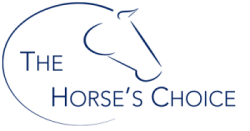The horse naturally carries 60 % of its weight over the front end. There are over 700 voluntary muscles in the equine body, accounting for over a third of their body weight. The horse has no collar bones, so the shoulders are attached to the body by muscles, ligaments and fascia known as the Thoracic Sling. The Thoracic Sling is made up of a series of muscles all of which are involved in steering the ridden horse. If these muscles are out of balance then the whole of the horse will be out of balance. Any compensation will quickly cause problems in the rest of the body.
If your horse has a dip in front of the wither at the base of the neck, or has a very high or very low wither, these are indications of an imbalance. The distance from the top of the [cartilage of prolongation of the] shoulder blade to the wither should be the same as the distance from the elbow to the base of the thorax (body). If this is uneven, there may be an imbalance in the thoracic sling.
Trapezius – cervical & thoracic
The Trapezius muscles attach the scapula to the wither and is crucial to the correct position and free movement of the shoulder. They are the most superficial layer of muscles, with the thoracic part lying directly under the points of the saddle tree. They are usually the first to show signs of injury, first from soreness then from atrophy.The muscles work together to move the scapula. The thoracic part moves the scapula up & back and the cervical moves the scapula up and forward. they play a major part in attaching the foreleg to the body, along with the thoracic part of the rhomboids.
Rhomboids – cervical & thoracic
The rhomboids attach the scapula to the spinous processes of the wither and lie beneath the trapezius. The thoracic part helps to lift the scapula up & forwards and the cervical can raise the neck. Damage to the rhomboids is only visible in severe cases and usually presents as a pronounced dip in front of the wither. Damage to this muscle, as with the trapezius, will affect the movement of the shoulder and the ability to raise the neck.
Serratus – cervical & thoracic
The main component of the thoracic sling. The cervical serratus attaches the scapula to the cervical vertebrae and draws the scapula forward. The thoracic serratus attaches the scapula to the ribs and pulls the scapula back & downwards. It is an important shock absorber. The thoracic serratus lies under the girth and the edge of longer saddle flaps. It can be very sensitive.
Pectorals
